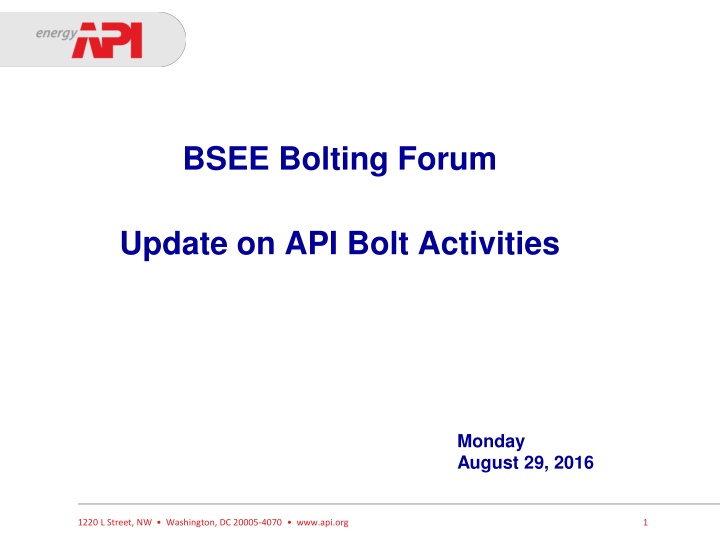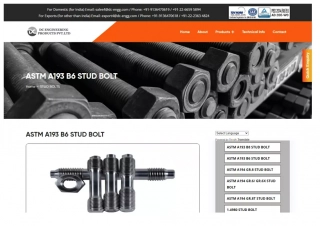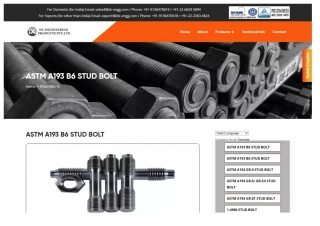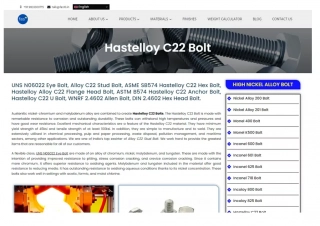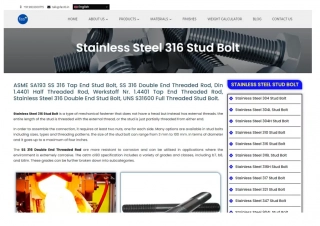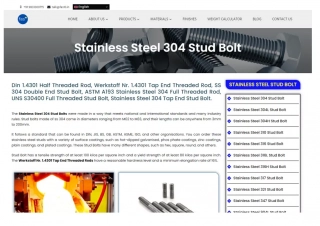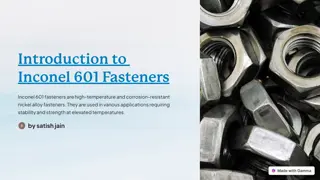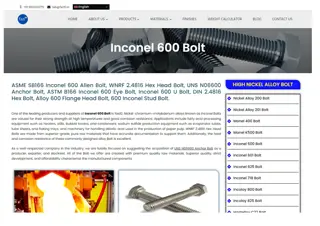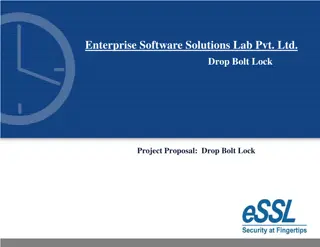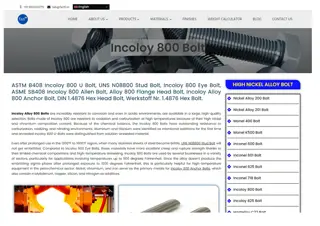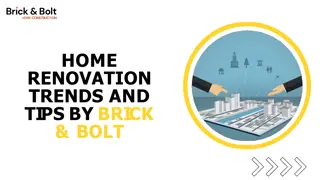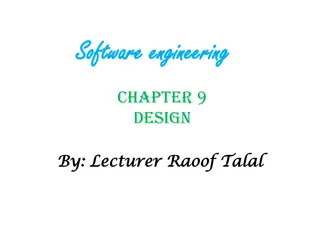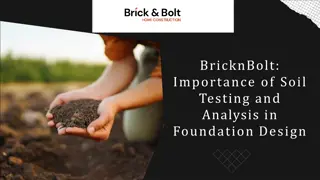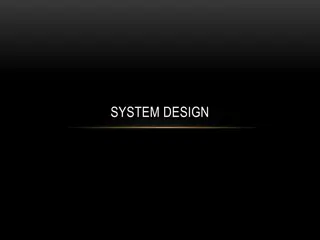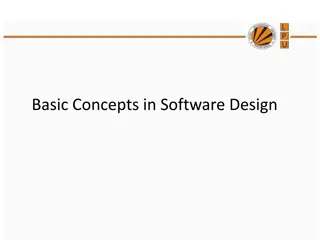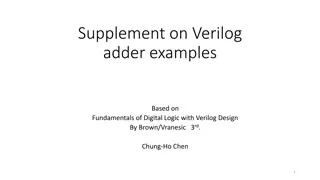Bolt Design Fundamentals
Terminology, types, strength, and failure modes of bolts for static and fatigue applications. Learn about tension joints, static loads, and factors of safety in bolted connections. An example calculation for determining maximum force in a bolted joint is provided.
Download Presentation

Please find below an Image/Link to download the presentation.
The content on the website is provided AS IS for your information and personal use only. It may not be sold, licensed, or shared on other websites without obtaining consent from the author.If you encounter any issues during the download, it is possible that the publisher has removed the file from their server.
You are allowed to download the files provided on this website for personal or commercial use, subject to the condition that they are used lawfully. All files are the property of their respective owners.
The content on the website is provided AS IS for your information and personal use only. It may not be sold, licensed, or shared on other websites without obtaining consent from the author.
E N D
Presentation Transcript
BSEE Bolting Forum Update on API Bolt Activities Monday August 29, 2016 1220 L Street, NW Washington, DC 20005-4070 www.api.org 1
Overview 1. Industry is here to share work that has been undertaken to address Subsea Blowout Preventer (BOP) bolting issues 2. Work to date has benefited from ongoing collaboration between Operators, Rig Contractors and Original Equipment Owners (OEMs) 3. Industry has been engaged with BSEE on the issue since 2014 Specifically addressing Safety Alert 318 Committed to a collaborative working relationship moving forward 4. Industry looks forward to continued engagement with BSEE, the National Labs and other parties in efforts to address the issue 1220 L Street, NW Washington, DC 20005-4070 www.api.org 2
Bolting Timeline API sends BSEE response, highlighting ongoing activities and proposing BSEE presentation at Jan. 2015 Upstream Standards Meeting API Multi-Segment Task Group finished draft report and presents it with recommendations to API Standards Committee BSEE follow-up letter received, additional failures noted, follow- up meeting requested API Multi-Segment Task Group created, meetings bi- monthly to complete review, develop report and recommendations BSEE issues Bolting Failure Report API prepares response for review by committees August February-December September-November December January January 2014 2016 2015 API Standards Committee reviews report and recommendations, requests final comments to Task Group Chair by Feb. 18 with final report and comments by Feb 29. Initial implementation plan required by June Comments: Initial report August 2014 Multi-Segment Task Group includes diverse group of subject matter experts from oil companies, manufacturers, class societies, service & supply companies and drilling contractors BSEE presents report, API forms Multi-Segment Task Group to review report and make recommendations 1220 L Street, NW Washington, DC 20005-4070 www.api.org 3
Bolting Timeline 2016 6/22 API meets with BSEE on operational recommendations 7/15 API Industry proposal to BSEE on proposed path forward API Subcommittees initiate review for revisions for bolting and quality standards 8/25 BSEE endorsement of Industry proposal BSEE Safety Alert Issued 3/11 API Standards Committee Holds Review Meeting, assigns feasibility/review task to six relevant subcommittees API Monogram Program staff complete audit review, report under review 8/29 BSEE Public Forum SME Workshop with Industry May April June February March July 3Q/4Q Teleconference with BSEE and members of standards subcommittees about the possibility of the products specs referencing API bolting standards 3/31 API meets with BSEE on operational recommendations Comments: Bolting standard, 2nd edition ballot issued May 31. Quality standard revisions ballot by September 1220 L Street, NW Washington, DC 20005-4070 www.api.org 4
Industry Focus Areas 1. Research a) Review existing research b) Work with BSEE on the terms of reference for upcoming research projects 2. Standards a) Enhance applicable bolting requirements in multiple API standards 3. Quality Assurance, Quality Control a) Review latest requirements to determine if additional updates are needed 4. Multi-Segment Task Group and Bolting Workgroup a) Established diverse industry work groups composed of Operators, Drilling Contractors and Original Equipment Manufacturers (OEMs) b) Focused on short and long term standards and research related projects, and on near term operational activities 1220 L Street, NW Washington, DC 20005-4070 www.api.org 5
API Bolting Specifications 1. API specifications (standards) include requirements for the qualification, production and documentation of carbon, alloy steel and corrosion resistant alloy (CRA) bolting used in the petroleum and natural gas industries 2. Key topics covered a) Raw Material requirements b) Manufacturing controls (including forging, thread forming) c) Heat treatment d) Microstructure e) Hardness f) Testing g) Traceability h) Licensing requirements 3. Per specification, the definition of bolting Section 3.1.1: a) All-thread studs, tap-end studs, double-ended studs, headed bolts, cap screws, screws, and nuts 1220 L Street, NW Washington, DC 20005-4070 www.api.org 6
Factors Proactively Addressed by Industry on Bolt Issue Perform torque at rig per procedure with additional oversight 20 E manufacturing and testing requirements Material Resistance Stress Environmental Cracking Subsea Investigate and minimize probable sources for environmental cracking i.e. Hydrogen sources Environment 1220 L Street, NW Washington, DC 20005-4070 www.api.org 7
Summary of actions taken by Industry 1. Engaged Operators, Rig Contractors and OEMs 2. Developed Multi-Segment Task Group Report with recommendations related to improvements in standards/technical programs to address bolt issue (Feb. 2016) 3. Established Workgroup to provide recommended path forward for operations (and respond to safety alert): a) Defined critical bolting as bolting that the failure of which could result in loss of containment of wellbore fluids to the environment; focus of recommendations b) Increased adoption of API bolting specifications c) Upgrade of critical bolting at higher risk (i.e. potential hardness issue) d) Enhanced quality assurance/quality control e) Updated make-up procedures, with additional engineering rigor and oversight f) Elimination of electroplated zinc coatings g) Enhanced failure reporting with wider distribution 8 1220 L Street, NW Washington, DC 20005-4070 www.api.org
Industry Commitment to Safety as a Core Value Industry stands committed to continuous improvement in: System reliability System integrity The total system of safety Industry stands committed to effectively addressing bolt issue through: Research Standards and technical programs Quality assurance/quality control Collaboration with BSEE and stakeholders 9 1220 L Street, NW Washington, DC 20005-4070 www.api.org
